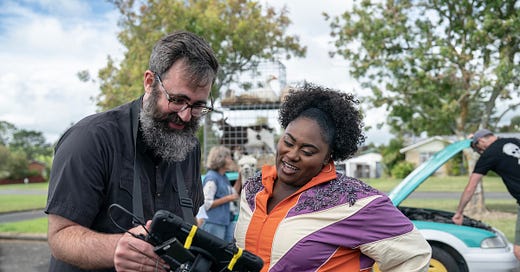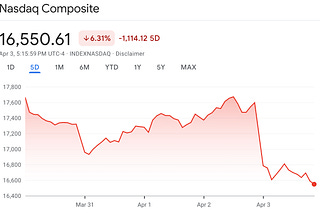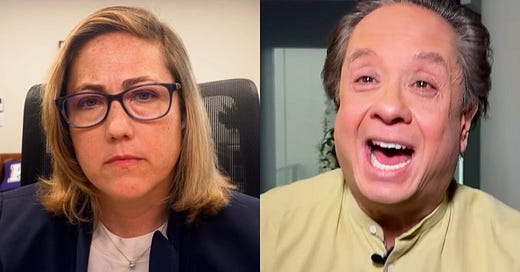
On last week’s Bulwark Goes to Hollywood, I talked to Ray Mendoza about Warfare, which he co-wrote and co-directed with Alex Garland (Civil War). You can listen here or watch here:
I really hope you check out the movie in a theater; it’s the sort of movie where the sound system is incredibly important. You want to hear this on the biggest speakers possible, so you can actually feel it, as the concussive blasts from grenades, IEDs, and overflights are a key part of the film’s feel.
I also hope you watch the movie so you can enjoy our upcoming episode of Across the Movie Aisle, as we’re going to be discussing it. And so you can hear my almost visceral howl of rage when I describe what might be the stupidest thing I’ve ever read: the folks who think Warfare is a piece of pro-war propaganda. I cannot stress enough that this read on the movie is incorrect. I know precisely where this argument comes from—there’s a particularly annoying quote from François Truffaut in which he argues that it’s impossible to make an anti-war film because the nature of cinema inherently makes combat look heroic; I understand his point, but it’s simply incorrect, as anyone who has seen Come and See or Paths of Glory knows—and it just does not apply to this film.
Anyway, you should see Warfare. Unless you have kids to entertain. Then I guess you’ve gotta take them to A Minecraft Movie.
A (Jared Hess) Minecraft Movie.
There’s a funny bit in the first episode of The Studio where new studio chief Matt Remick (Seth Rogen) agrees to make a movie based on Kool-Aid (the drink) and lucks his way into a pitch from Martin Scorsese about the Jonestown Massacre. He tells Scorsese he’ll buy the pitch in the room so long as they call it Kool-Aid. He thinks this is a genius maneuver on his part, a way to meld capitalism and artistry, and the second he says it out loud to his coworkers he realizes it’s completely insane and bails before he pitches the studio’s owner on the idea.
It’s a good gag, as the industry has done a pretty great job of coopting auteurist directors into the IP game: from Christopher Nolan’s Batman movies to Greta Gerwig’s Barbie to Ryan Coogler’s work on Creed and Black Panther, there’s something to be said for giving great directors a little room to play with in the franchise sandbox and seeing what they build. These moves have also been financially rewarding as well as critically acclaimed: the studios have made billions just on the films mentioned here.
I’m not going to pretend that A Minecraft Movie is the biggest hit of the year (so far!) because it was directed by Jared Hess; Minecraft is the most popular video game in the world and there’s a generational loyalty there that transcends auteurist appreciation. But I do think it’s worth at least acknowledging that the movie feels quite distinctly like a movie made by the guy who created Napoleon Dynamite and Nacho Libre. There’s an earnest weirdness to A Minecraft Movie that has served as a line running through Hess’s career, and you have to appreciate the folks at Legendary and Warner Bros. giving him enough space to make something that feels uniquely Hessian.
Like Napoleon Dynamite, Nacho Libre, and Gentlemen Broncos, A Minecraft Movie is very much about the struggles of a creative person trapped in a world that doesn’t appreciate their skillset. Henry (Sebastian Hansen) spends his days sketching out jetpacks and thinking of imaginative ways to sketch apples and bananas in his school’s art class; for his effort, he earns the scorn of peers and teachers alike. His sketches call to mind Napoleon’s (Jon Heder) “liger” or Igancio’s (Jack Black) luchador costumes in Nacho Libre. The way Jason Momoa says “tots” in this film, it feels as if he’s had instruction from a dialogue coach on Idaho accents. And there are llamas, so many llamas.
Beyond the surface trappings, though, is this idea of a world that’s more or less ours, just slightly heightened into something absurd. This is why the best parts of the movie—the real heart of the endeavor—take place in the real world rather than the “Overworld” of digital blocks. Chuglass, Idaho, is the sort of place where the main industry revolves around potato chips, a town in which a horrible, smiling, chip-hawking mascot smiles down on everyone until it is destroyed in a tragic jetpack accident. It’s the sort of place where a silent, blocky Minecraft “villager” can fall in love with Jennifer Coolidge, who manages to turn the phrase “Jeep Grand Cherokee” from product placement into a sort of laughter-inducing totem. Where a champion video game player (Momoa) can try to charge a kid $50 to mentor him into being awesome.
Again, it’s this variety of realistic absurdity that has always made Hess’s work pop. Nacho Libre’s setting in the world of Mexican wrestling is the perfect place for this variety of silliness, the costumes and the play-fighting heightening Ignacio’s genuine feelings for the nun Sister Encarnación (Ana de la Reguera) and his responsibilities to the orphans under his care. And it’s why Don Verdean—Hess’s movie about a biblical archaeologist played by Sam Rockwell—was something of a misfire despite an all-star comedic cast filled out by Danny McBride (playing a pastor in a role that feels like a PG preview of The Righteous Gemstones), Jermaine Clement, Will Forte, and Amy Ryan. That movie was somehow too grounded, too restrained. It was an earnest film about the importance of faith but despite being (at least in part) about a guy pretending to find the Holy Grail in the American Southwest, it wasn’t really silly or stylized enough to work.
Hess’s credit on A Minecraft Movie hasn’t paid off with critical acclaim—as I write this, the film is just 47 percent fresh on Rotten Tomatoes—but I do think his brand of genuine goofiness will help turn the movie into a generational touchstone, something like 1990’s Teenage Mutant Ninja Turtles was for my cohort.
Make sure to listen to this week’s Bulwark Goes to Hollywood! I had a great chat with Alissa Wilkinson about her new book on Joan Didion, We Tell Ourselves Stories. And if you’re a fan of Didion, make sure to check out Alissa’s book! It’s pretty great, I had a fantastic time reading it.
Hollywood Imagery's Impact on Politics
On this week’s episode, I’m joined by New York Times film critic Alissa Wilkinson to discuss her new book about Joan Didion, We Tell Ourselves Stories. I mentioned the book in a newsletter a couple of weeks back, but I wanted to focus on the ways in which the political world has borrowed sho…


















Jared Hess plus Jack Black plus Jason Momoa, immersed in Minecraft hellscape. Sorry but Rotten Tomatos can suck it.
Whenever I hear that Truffaut I like to point out that Spielberg took the counter and Spielberg is right. Most war films not set a long time ago on a galaxy far far away are anti-war.
Warfare is phenomenal.